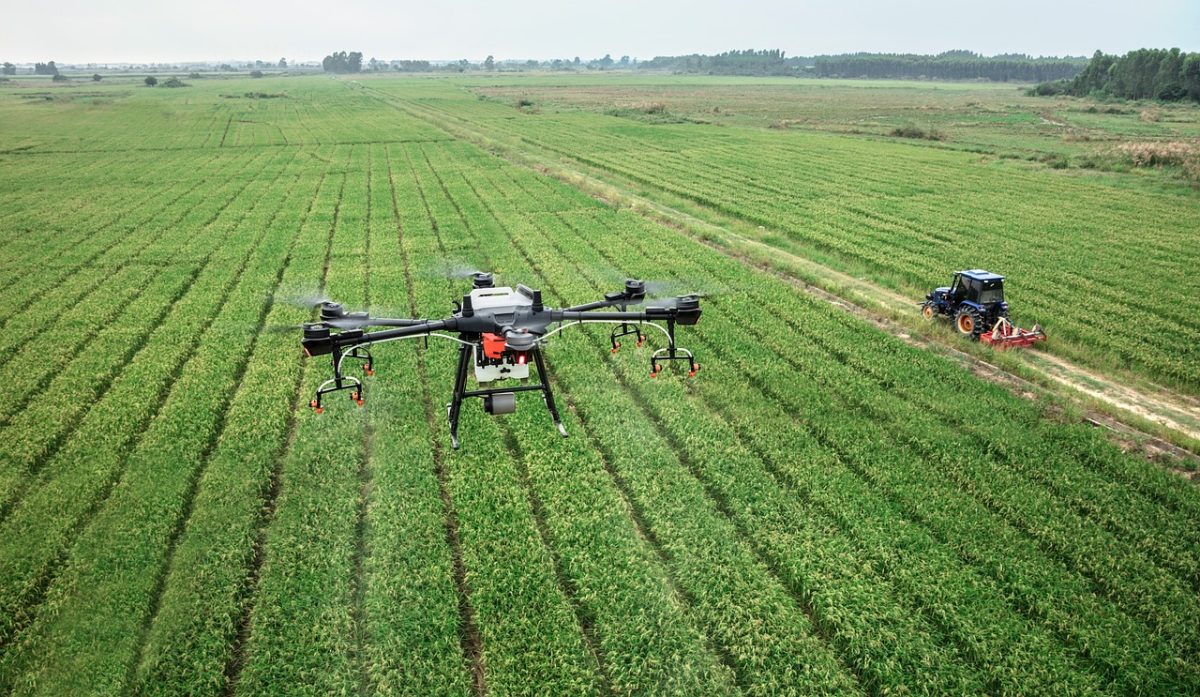In the ever-changing agricultural world, predictive analytics powered by artificial intelligence (AI) is transforming how farmers manage their crops. AI offers farmers with unparalleled insights by leveraging massive volumes of historical and real-time data, allowing them to optimise their operations and increase output. This article explores the disruptive impact of predictive analytics in agriculture, emphasising its essential applications and advantages.
Understanding Predictive Analytics in Agriculture
Predictive analytics is the use of statistical algorithms and machine learning techniques to analyse past data and estimate future outcomes. In agriculture, this entails using data on crop yields, soil conditions, weather patterns, and insect outbreaks to forecast results and influence decisions.
Crop Yield Prediction
Crop production prediction is one of predictive analytics’ most important uses in agriculture. AI systems use previous data on weather, soil, and agricultural development trends to predict future yields with high accuracy. These projections help farmers plan their harvests more effectively, secure labour ahead of time, and make educated crop management decisions.
For example, if AI forecasts a decreased yield owing to expected bad weather, farmers might change their strategy to offset the damage. This might involve using specialised fertilisers or employing preventative measures to improve crop resilience.
Disease Detection
Early disease identification is critical for avoiding major crop losses. AI-powered technologies analyse crop photos to detect early symptoms of illnesses such as fungal infections and bacterial blights. By detecting these illnesses early on, farmers may implement preventive measures such as targeted pesticide treatment, lowering total damage and assuring healthier crops.
Furthermore, AI systems may continually learn from fresh data, enhancing their ability to detect illnesses over time. This continuous learning capacity guarantees that farmers always get the most current knowledge to preserve their crops.
Weather Forecasting
Accurate weather forecasting is critical for successful crop management. AI systems use past weather trends and real-time data from weather stations to forecast future weather conditions. These projections assist farmers in planning for extreme weather occurrences, such as droughts or high rains, and optimising crop management practices appropriately.
For example, knowing about an impending dry period might urge farmers to boost irrigation, protecting their crops from water stress. In contrast, anticipating excessive rains may need changes in irrigation schedules to avoid waterlogging and root damage.
Pest and Disease Outbreak Prediction
AI’s predictive skills go beyond weather and yield forecasting to include pest and disease breakout predictions. By analysing previous data and monitoring environmental sensors, AI can detect minor indications that indicate bug infestations or disease outbreaks.
For example, shifting soil temperatures before rootworm development can be recognised early, allowing farmers to take preemptive steps such as targeted pesticide administration. This technique flips the age-old war against pests on its head, allowing farmers to retake the strategic advantage.
The Future of Predictive Analytics in Agriculture
The integration of AI-driven predictive analytics in agriculture is still in its early stages, but the opportunities are enormous. As technology advances, predictive models will become more accurate and comprehensive, including a broader variety of factors and scenarios.
Future advances may include the real-time integration of satellite imaging, drone data, and improved soil sensors, giving farmers an even more thorough and dynamic view of their farms. In addition, advances in machine learning algorithms will improve AI’s predictive capacity, allowing farmers to make more precise and effective judgements.
Conclusion
Predictive analytics, enabled by AI, is revolutionising agriculture by giving farmers actionable information and precise projections. From agricultural yield prediction and disease detection to weather forecasting and pest outbreak prediction, these AI-powered solutions assist farmers in optimising their operations and protecting their crops more efficiently. As technology advances, the use of predictive analytics in agriculture will expand, ushering in a new era of efficiency, sustainability, and production.
Contact us at open-innovator@quotients.com to schedule a consultation and explore the transformative potential of this innovative technology.






